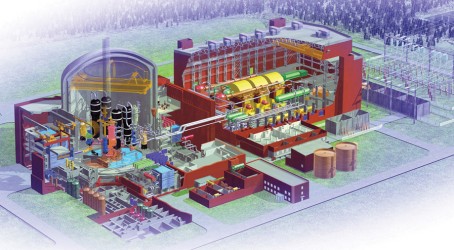Funding for academic research is under constant threat. The to-and-fro between swingeing politicians and idealistic academics follows a predictable rhythm. “We need to make cutbacks,” cry the politicians. “Protect blue skies research,” retort the academics.
It’s commendable, then, that the Engineering and Physical Sciences Research Council (EPSRC) continues to run its Fellowship programme on a large scale. In July this year, the EPSRC doled out a total of £38 million to 46 individuals, each receiving between £500,000 and £1.5m, “to help develop their potential as the next generation of world-leading scientists and engineers”.
Maggie Wilson, joint head of research careers at the EPSRC, says: “It’s one of the key goals to develop future leaders. Our Fellowships are designed to help equip our future research leaders with the skills and resources necessary to address the biggest future challenges for the UK, like develop-ing sustainable manufacturing and energy.”
The Fellowships last five years. They are selected by peer review and then interviewed. The selection criteria examines both the characteristics of the individual and the quality of the research. Successful fellows have a strong publication record and are able to demonstrate independence from their supervisors. There are also research areas, such as energy, where the EPSRC particularly favours applications.
Since 2007, there have been two types of Fellowships: Career Acceleration Fellowships and Leadership Fellowships. The two types address two distinct career stages, within 10 years of completing their PhD, and during a later post appointment stage. Wilson says that it is too early to judge the success of the new types of Fellowships, but that reviews of previous schemes indicate that they help to build the careers of important researchers. A more recent study has indicated that there is a notable difference in the citation impact of the publications of successful fellowship applicants.
Competition for the Fellowships is intense. Each year an average of 450 applications are received for around 25 career acceleration Fellowships. They cover a breathtaking range of projects, from engineers devising ways of making nuclear reactors more efficient, to computer scientists developing programs to automatically summarise the millions of posts people make to social networking websites.
Each Fellow has an idea that could change the future, some in a small way and some in a big way. Whichever is the case, the grant gives them the independence to dedicate themselves to research that the private sector would not fund.
Here is a selection of just four of this year’s Fellowship grants.
Urine-fuelled iPods
Dr Ioannis Ieropoulos, research fellow at the Bristol Robotics Laboratory (BRL), has been awarded a £565,000 Career Acceleration grant to develop microbial fuel cells that can run off waste, including urine, which are able to produce sufficient electricity to run everyday devices.
Microbial fuel cells (MFCs) convert the chemical energy of a feedstock into electricity using micro-organisms, which act as biocatalysts. They have an anode and a cathode, and contain microbes that can be found in ordinary waste water. Ieropoulos says: “The process is similar to anaerobic digestion, but instead of microbes degrading the fuel to produce methane, we get them to produce electroactive metabolites or conduct electrons.”
But the most surprising aspect of his research is the feedstock Ieropoulos is looking at using. “We are going to test a range of different wastes, including urine,” he says. “It’s sterile and the microbial community in the fuel cell has to be very stable ... we don’t want to disrupt it with a foreign substance. The rest of the chemicals in urine, like chloride, potassium and bilirubin, are also very useful.
“We intend to push the power output into watts,” Ieropoulos adds. “If we end up with a more powerful stack, we would want to show it charging an iPod or mobile phone. It would be fantastic to get sufficient energy to light a room or the garden shed from the domestic wastewater of a home.”
The first MFC developed at BRL nine years ago produced power in nanowatts. Individual microbial fuel cells can now produce hundreds of microwatts. The most recent stack of fuel cells produces milliwatts. To boost the power output of the MFC Ieropoulos aims to miniaturise it and build up bigger fuel cell stacks. Unlike anaerobic digestion, the processes in a MFC are fast, and have to be kept fast to be efficient. Smaller MFCs are more efficient than large ones because the microbes have shorter distances to travel to the anode. Ieropoulos also wants to develop self-sustainable cathodes that use microbes to boost power output.
The MFC also has potential to be used for wastewater treatment because when the microbes feed on a fuel they break it down into a cleaner fluid. A PhD project being funded by Wessex Water is to look at how they could be adapted to complement existing industry treatment processes.
Ieropoulos is fully aware of the potentially headline-grabbing nature of his urine-based research. “When I tell people about it, they either get very excited and see the potential, and there are people who are wary of the future. But there is sound science and technology behind this,” he says.
Autonomous robots and cars
Dr Paul Newman, lecturer at the robotics laboratory at Oxford University, has been awarded a £1.5m Leadership Fellowship to develop fully autonomous robots and vehicles that do not need infrastructure.
Current autonomous robots and vehicles navigate their way through an environment by using beacons, guide wires or rails. Even ambitious plans for future autonomous vehicles involve the installation of substantial roadside infrastructure for navigation.
Newman believes such infrastructure is unnecessary. Instead, he says it is possible for a robot or vehicle to assimilate data from a variety of existing technologies, such as cameras, radar, lasers, GPS and the internet, process it using the latest maths and probability techniques, and make navigation decisions independently. He describes existing driver assistance systems, such as assisted braking and lane departure warning systems, as the “thin end of the wedge”.
He adds: “These systems work out where you are relative to the car in front of you. I want a car that knows where it is relative to the surface of the earth. How to do that not just for one hour, but all the time, the persistence problem, is really interesting. You can’t programme for every situation, some degree of introspection is necessary.”
Newman says developing a car able to drive around test roads autonomously is possible within the next five years of his Fellowship, as will be developing robots able to navigate autonomously around factories. Driving around London and Oxfordshire may take longer, but he believes autonomous systems will eventually be offered first as an extra in high-end luxury vehicles, and then to other vehicles, within his career.

Longer lasting components in power plants
Dr Catrin Davies, from Imperial College London, has been awarded a £590,000 Career Acceleration Fellowship grant to develop ways of accurately predicting how long components will last in power stations. She will also develop better ways of monitoring components once installed in a system, and computer simulation tools that will enable components to be designed to last longer.
Her research has two main strands. The first is to develop test and measurement techniques currently used in laboratories. Her research will use high energy X-ray tomography, which gives 3D volumetric insights of damage development on the micro scale. Non-destructive testing tools which use electrical fields will be developed so they can monitor strain and damage once a component is installed.
“These techniques will allow us to fully categorise in chronological order the damage that happens to a component,” says Davies. “The difficulty is that we need to get these experimental techniques working at extremely high temperature. And oxidisation is an issue. The components will operate in plant at extremely high temperatures of around 500°C.”
The second phase is to create computer simulations by fusing the data from the test and monitoring techniques with modelling software on high performance computers.
These simulations will simulate material behaviour and components’ responses to different operating conditions. Davies hopes this will create tools that will be able to predict accurately when components will fail — and optimise designs to last longer. She says: “If a failure is imminent, you can stop that leak from happening. It’s also important that we develop more efficient components and prolong the life of existing power generation plant.”
Although Davies says her work is focused primarily on steels to be used in the next generation of nuclear and fossil fuel power plants, it will be relevant to materials used in different sectors, such as aerospace and chemical processing.

Energy from clothes
Dr Steve Beeby from the University of Southampton has been awarded a £910,000 Leadership Fellowship for his research into the development of rapid printing processes and active printed inks to facilitate the manufacturing of fabrics that can generate electricity. ‘Energy harvesting’ picks up kinetic and thermal energy from the environment and converts it into electricity. Beeby wants to develop piezo-electric materials that can be printed on to clothes to tap into kinetic energy and ‘P&N’ thermoelectric semicon-ductors that can absorb thermal energy from the body.
“Everything you would have seen so far has a battery hidden away somewhere for its power source. In the long term, it would be good to replace the batteries with energy harvesting and an electrochemical cell for storage, printed on the fabric with some electronics. The aim is to get the level of integration to a point the fabric industry is comfortable with,” he says.
Beeby says he cannot be accurate about the amounts of electricity it may be possible to generate out of a printed area at this early stage of his research, but that hundreds of microwatts to milliwatts will be achieveable. The first applications will be in the medical sector, he says, such as disposable devices for monitoring heart rate.
